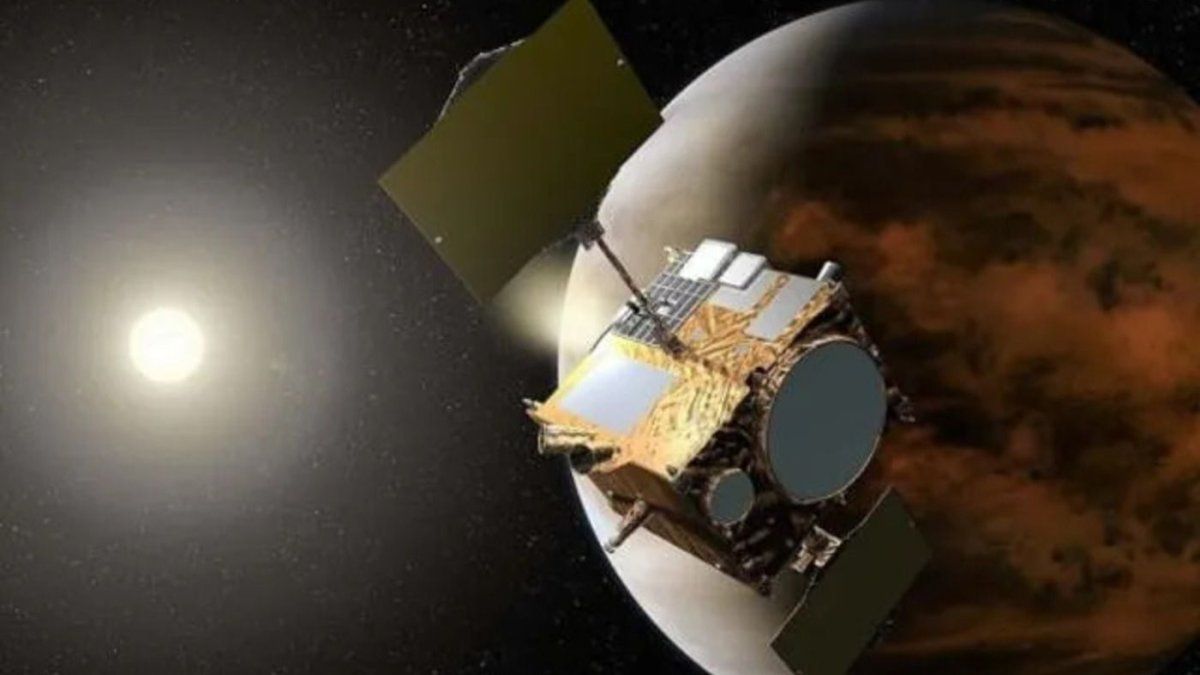The Japan Aerospace Exploration Agency (JAXA) confirmed that lost contact with the Akatsuki probe, launched in 2010 and that came into orbit of Venus in 2015. “After a long period of time, it became impossible to establish communication“JAXA communicated through an official notice on its website.
During 2024, Japan had its first successful moon landing with the SLIM module, which landed on lunar soil on January 20. Now, from JAXA they carry out communications recovery operations with the only sona that orbits Venusthe second closest planet to the sun.
What is the Akatsuki space probe?
The space probe Akatsukifrom Japan, was released on May 21, 2010 and, since then, he dedicated himself to monitor weather patterns of the second planet in the solar system. The device was the only one that orbited Venus.
The name of this artifact is in Japanese and its translation means ‘Dawn’. It is estimated that for its development JAXA invested$300 million.
The probe had completed its planned regular operations in 2018 and was on a survival basis that allowed it to continue making observations. However, after more than 10 years of activity, on May 29, JAXA announced, through an official statement, that He lost contact at the end of April, during a routine operation.
Embed – https://publish.twitter.com/oembed?url=https://x.com/Akatsuki_JAXA/status/1795713276896227465&partner=&hide_thread=false
[From the Akatsuki team](1/2)
ISAS has lost contact with Akatsuki after an operation in late April due to an extended period of low attitude stability control mode, and is currently making efforts to reestablish communication with the spacecraft.— (@Akatsuki_JAXA) May 29, 2024
The failure was that the probe, 550 kilometers from the surface of Venus, did not decelerate enough to enter the planet’s orbit; It was necessary to keep the probe’s engine active for 12 minutes in order to slow it down and place it in the planet’s orbit. However the process failed for unknown reasons.
“After a long period of time, it became impossible to establish communication“, they assured from the Japanese agency. Since then, engineers have worked hard to reestablish communication, but to date, The efforts did not bear fruit.
Japan and space junk
In a year full of successes for the Asian country in the aerospace field, the Japanese company Astroscale achieved a new historic milestone: in May, it released the first photo in history of space debris. This was captured by tools designed to identify debris in microgravity conditions.
The historic photograph was taken by Active Debris Removal commercial satellite (ADRAS-J), an artifact that was built with the goal of inspecting debris in space. JAXA chose the satellite created by the private company as part of its commercial Earth orbit debris removal program.
In general terms, when talking about the phenomenon of space debris – to date – they usually used figures, weight averages, simulations and approximations of sizes to exemplify its impact. The image achieved by Japan could be the kickoff for a new stage in this area of aerospace exploration.
The photograph shows the top of the Japanese HIIA rocketwhich was launched in 2009. This object is located virtually “Lost in Space“since it does not emit signals GPS towards Earth and, without having a computerized position that can be calculated, the scrap becomes invisible to spacecraft and other satellites that are active in Earth orbit.
space junk astroscale.webp
Part of the Japanese HIIA rocket, space debris photographed for the first time in history.
Astroscale
This “space pollution” it’s a latent danger for the astronauts of the future and even for the inhabitants of Earth. This is why, today, rendezvous and proximity missions have become a necessary new field to explore in the space industry.
Along these lines, the Active Debris Removal satellite achieved a technical milestone: it was positioned in a safe and controlled manner to the rocket stage, a few hundred meters away. “ADRAS-J successfully demonstrated proximity and close encounter operations using a safety ellipse approximation technique, along with relative navigation inputs from the spacecraft’s payload sensor suite,” Astroscale detailed.
In this way, the Japanese satellite will continue to navigate around the space debris to continue capturing images while you perfect collect data to improve your maneuvers and future versions. Additionally, Astroscale plans to use this information to build the ADRAS-J2a new satellite equipped with robotic arms that will try to inaugurate a new era in the active removal of space debris.
Source: Ambito




